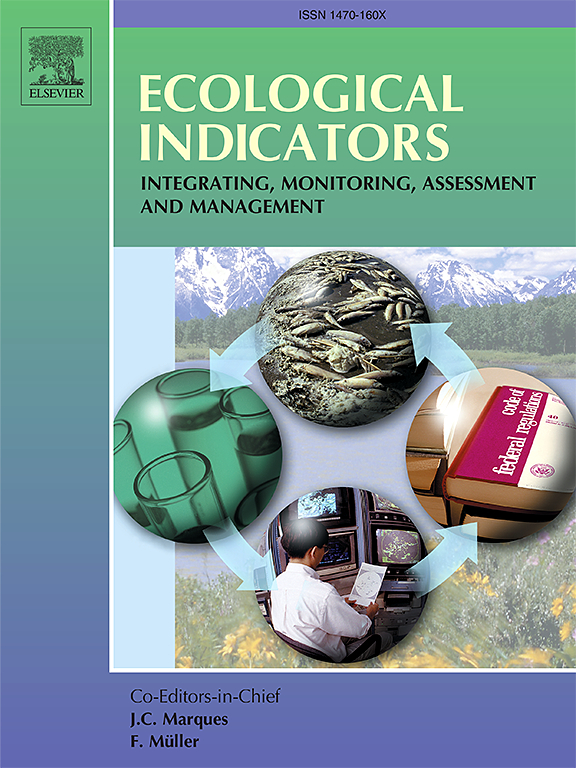Mutual-information of meteorological-soil and spatial propagation: Agricultural drought assessment based on network science
IF 7
2区 环境科学与生态学
Q1 ENVIRONMENTAL SCIENCES
引用次数: 0
Abstract
Agricultural drought causes serious harm to food security and vegetation ecosystems, and challenges the entire food-water-energy-health-environment nexus, complicating, in turn, management strategies. By building a meteorological and soil mutual-information index, this paper developed a novel method for assessing agricultural drought from a network science perspective. The method identified the atmospheric vapor pressure deficit as the key to the information on drought propagation by the network of meteorological and hydrological elements. Results showed that the meteorological and soil mutual-information index was superior to the standardized soil moisture index in monitoring agricultural drought. The spatial propagation of information on drought led to the key source areas for the occurrence of drought. A highly clustered connectivity structure derived from the drought propagation network was demonstrated in China. Under climate scenario SSP1-26, the increase in water vapor pressure deficit was significantly suppressed, thus mitigating agricultural (and/or vegetation) drought. Under high emission scenarios SSP2-45 and SSP5-85, the mutual-information between meteorological and hydrological elements progressively increased, and this increased information to extreme agricultural drought. The information transfer that occurred under a wide range of meteorological and hydrological elements can also be applied to the mutual-information network.
求助全文
约1分钟内获得全文
求助全文
来源期刊

Ecological Indicators
环境科学-环境科学
CiteScore
11.80
自引率
8.70%
发文量
1163
审稿时长
78 days
期刊介绍:
The ultimate aim of Ecological Indicators is to integrate the monitoring and assessment of ecological and environmental indicators with management practices. The journal provides a forum for the discussion of the applied scientific development and review of traditional indicator approaches as well as for theoretical, modelling and quantitative applications such as index development. Research into the following areas will be published.
• All aspects of ecological and environmental indicators and indices.
• New indicators, and new approaches and methods for indicator development, testing and use.
• Development and modelling of indices, e.g. application of indicator suites across multiple scales and resources.
• Analysis and research of resource, system- and scale-specific indicators.
• Methods for integration of social and other valuation metrics for the production of scientifically rigorous and politically-relevant assessments using indicator-based monitoring and assessment programs.
• How research indicators can be transformed into direct application for management purposes.
• Broader assessment objectives and methods, e.g. biodiversity, biological integrity, and sustainability, through the use of indicators.
• Resource-specific indicators such as landscape, agroecosystems, forests, wetlands, etc.
 求助内容:
求助内容: 应助结果提醒方式:
应助结果提醒方式:


